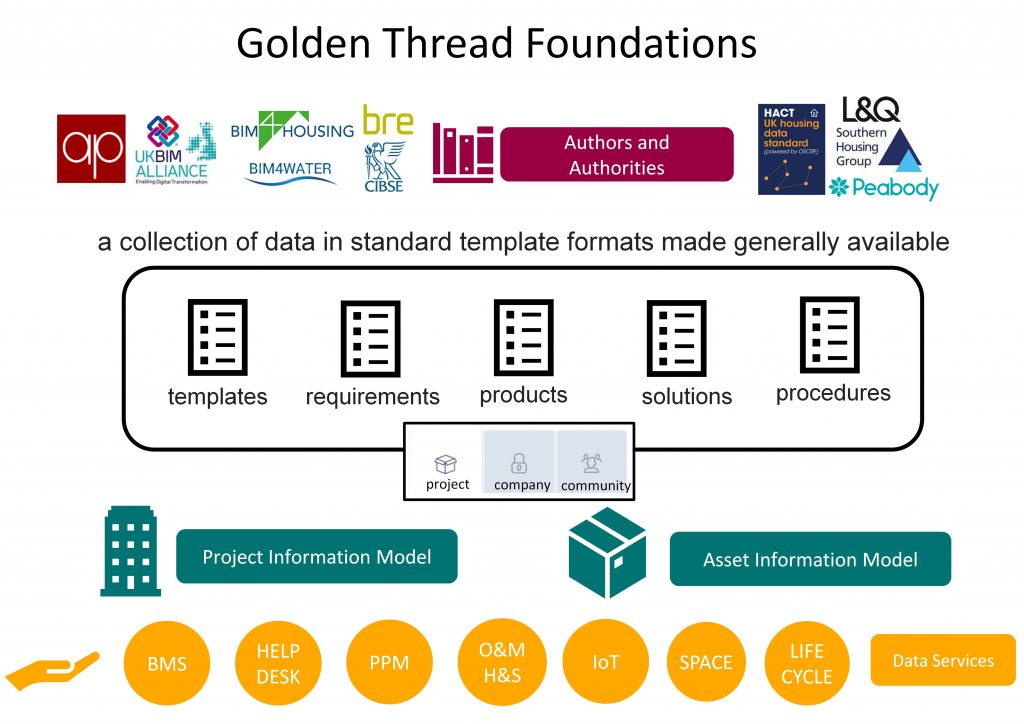Despite years of effort to support adoption, BIM has struggled to gain a foothold in the housing sector but BIM4Housing chair George Stevenson believes the last 18 months, the emergence of the “Golden Thread” and a shift from “technology” to “process” through Better Information Management is beginning to change long-held misconceptions about BIM’s potential
BIM requires people to change the way they do things and, as with any change, there needs to be a tangible business driver for it to be sustainable.
The adoption of BIM within housing has suffered from the perception that it is a technology, largely one around 3D modelling, so other people in the businesses engaged in delivery, such as procurement, installation, inspection, operations and commercial management, can be alienated.
Yet, ironically, they are the people who can contribute most of the really important information.
Even now, 10 years since the government announced the mandate, most BIM is “lonely BIM” – individual firms (largely designers) creating models and exchanging files but largely following the same processes they have always done and delivering very limited usable asset information.
To achieve what BIM promises, the whole team, including clients, need to fully engage.
Why are so few clients fully engaged
Most residential developers have individuals interested in BIM but the people with the real authority to instruct project-wide change considered BIM as something the supply chain uses to deliver the projects. It was a “nice to have” – as long as it didn’t cost any more or cause any disruption.
Clients were led to believe that all of the information they will need will be in the BIM model so they don’t really need to do anything. When their asset teams want the information they need, they could get it.
But they couldn’t.
Asset teams were handed a 3D model, an O&M manual with schedules that were disconnected from the 3D and a COBie workbook that didn’t contain what the asset managers needed.
Attempts to develop a proper business case fell at the first hurdle – and then came Grenfell.
Building a Safer Future
Dame Judith Hackitt correctly identified that BIM is part of the solution, mentioning BIM4Housing specifically, to deliver “the Golden Thread”.
This changed the landscape.
The risk of not knowing what has gone into the buildings and how they should perform was recognised and clients started to invest in understanding what they needed to do and what they should procure in terms of information.

BIM4Housing
Like other BIM4 groups, BIM4Housing’s activities revolved around periodic meetings where people showed how they were using technology and the benefits it had delivered to them – largely a means to promote and market expertise and technology solutions – all good stuff, but not the Golden Thread.
For BIM to really deliver, those involved in development, design, construction, manufacturing, operations, and advisory roles need to share processes and data in a way that ensures the traditional disconnects are overcome.
A lot of dedicated and passionate people have been working hard to produce standards and guidance to achieve that integration and interoperation, but it was clear there are still barriers that would break the Golden Thread.
Discovering the “Why?”
The term BIM is widely considered to mean a Building Information Model, so when Andrew Carpenter asked me to take over as chair in 2020, I repositioned it to mean Better Information Management.
This moved us away from it being a technology to being a process, enabled by different types of technology, some of which will be 3D.
We invited 80 or so experts from across the industry to establish six Working Groups, one for each stakeholder group, and asked them to identify real business issues that could be addressed through Better Information.
They compared their lists with other Working Groups and identified common topics – MMC, fire safety, standardised data and sustainability – and formed workstreams with representatives from each stakeholder group to collaborate and come up with recommendations.
Barriers
We identified several barriers that prevent BIM delivering the Golden Thread:
- Clients need to tell the project team what information they need and, perhaps more importantly, what they don’t need. They also need to dictate that it should be in structured, machine-readable format and it should be delivered and validated progressively (in accordance with all the standards) and not simply at the end.
- The perception that BIM is the 3D model. The majority of the information clients really need is about the products and materials that were actually installed but the contractors and suppliers who have that information, do not add it to 3D BIM models.
This isn’t because they are Luddites – rather, there is no workflow that makes sense for them to do so. The contractors who buy and install products have no need to model them in 3D.
The coordination should have been done by the designers/specialist BIM coordinators, with the installers working to schedules that are informed by the models.
I say informed, because the detail of what products are required will be in several related documents; the NBS specification that needs to be interpreted by experts who understand the various related CEN and BS standards, the product manufacturers guidance – all leading to what they need to procure.
This information can (and should) all be in the BIM deliverables – but in the BIM data model, which includes many things that are not modelled in 3D.
For example, for a fire door to be compliant, the BIM data should include the whole door set – closer, hinges, lock, handle, intumescent strip, smoke stop etc. These components would never be modelled – but they can (and should) be provided as structured, machine-readable data.
Few residential BIM models would have modelled the all the MEP assets in each individual apartment, but asset managers and tenants need to know what types of valves were installed, where they are and how they might be replaced. Again, they can (and should) be provided as structured, machine-readable data.
The solution
All of this is very achievable and we can learn from MMC, where they create standardised components, quality assure they are perfect and connect properly with other elements/systems to deliver an agreed outcome.
We need to do the same with data – standardised data libraries that can be assembled into a guaranteed deliverable that includes detail of the constituents and how they should perform.
The benefit
The Golden Thread can reduce the risks to safety (and prosecution); it can also reduce the risk to operational failure and, possibly even more important, can provide the environmental information we need to mitigate the biggest risk of all.
Finance directors are now taking an interest in what materials are being installed in their developments because, if they can guarantee they are coming from sustainable sources and their properties can deliver the required outcomes, interest rates will be lower.
All of these very tangible, business-critical outcomes from Better Information Management – which also which also delivers a cool 3D model – perhaps even a digital twin.
“Why?” becomes “Why not?”.
George Stevenson
Chair
BIM4Housing
Twitter: @BIM4Housing
LinkedIn: BIM4Housing

















